Author: Nichole Boyd
School/Organization:
John Bartram High School
Year: 2015
Seminar: Electronics from Toys to Tools: An Adventure for Future Engineers
Grade Level: 10
Keywords: Human body replica, Models of human body, Nervous system, Ohm’s law
School Subject(s): Science
This curriculum unit is intended to engage students with varying skillsets. Through differentiated instruction and use of students learning styles, students will increase their skillsets. The purpose of this unit is to teach students about the structure and function of the nervous system using Ohms Law. The activities are mostly hands- on and student construct models using proto-boards that mimic the nervous system.
Through studying diseases that affect this system student will be able to use what is learned and apply it to their everyday lives. This unit is designed to be cost effective.
Download Unit: Boyd-Nichole-unit.pdf
Did you try this unit in your classroom? Give us your feedback here.
In order to increase comprehension of students with various learning disabilities and skillsets will require a multitude of activities/projects that addresses individual learning styles. Traditional methods of educating children are becoming more and more obsolete and educators have to use strategies that will engage students regardless of their abilities or skillsets. Advocates for the use of learning styles in education recommend that teachers assess their students and adapt their classroom methodologies to best fit each student’s learning style (Pashler). Students today struggle to learn and teachers must differentiate instruction to ensure that all learn and are able to apply what is learned to their everyday lives. Visual learners prefer to learn using their sight and a teacher have to incorporate learning tools that nurture their desire to “see”, this could be in the form of a diagram or a chart. The auditory learner best learn through listening, short videos and discussions are useful with this type of student. The kinesthetic/tactile learner prefers to learn through having hands on experience for example constructing models and experimenting (Rose). According to LdPride.net, students who know their learning style develop coping strategies to compensate for their weaknesses and help them capitalize on their strengths (LDPride). Due to the shortage of funding in the classroom, it is almost impossible to teach the proper structure and functions of the nervous system without building models. By creating a model that mimic’s the circuitry of the nervous system will not only engage but also deepen students with different learning styles overall understanding of how the system looks and works. The model can be designed to illustrate both the central and peripheral nerve pathways and their inter connection. Students will be able to differentiate between diseases and trauma that affect the brain and spinal cord. Since many of these disorders are seen in their families and community they will be able to relate what they learn in class to their environment. The Nervous System The central nervous system (CNS) is the brain and spinal cord and the peripheral nervous system (PNS), is made up of the cranial and spinal nerves. The PNS connects all body parts with the CNS (Benarroach). Function The nervous system functions by sending nerve impulse, which are electrical currents, or action potentials that spread along the membrane of nerve cells called neurons. The structure of all neurons includes a cell body, dendrites and an axon. The cell body contains the nucleus and other substructures called organelles. Dendrites are short extensions of the cell that carry signals towards the cell body. Much longer axon fibers carry impulses to and away from the cell body. Insulating layers of myelin sheath wrap some of the axons, which serve to speed up the conduction of the signal along the nerve fiber. The CNS where the cell body exists is grouped in bundles of neurons called tracts. Interneurons, which are near the spinal cord, connect the CNS to the PNS. In this system sensory neurons send information they receive from the PNS known as external stimuli to the CNS, while motor neurons promotes actions from the CNS to the body part it serves (Kluwer 2009). There are many factors that affect the functioning of the nervous system: congenital disorders, degenerative diseases, nutritional diseases, inflammatory and infectious diseases, trauma, toxic disorders, and vascular diseases. Congenital Disorders A congenital disorder is a medical condition that is present at or before birth. These conditions, also referred to as birth defects, can be acquired during the fetal stage of development or from the genetic make up of the parents (Congenital). Degenerative Diseases A disease characterized by deterioration in quality or function of a tissue or organ. These diseases affect many of your body’s activities, such as balance, movement, talking, breathing, and heart function. Many of these diseases are genetic. Alcoholism, drug addiction, a tumor, or a stroke has also been known to cause nerve degeneration. Other causes may include toxins, chemicals, and viruses. Sometimes the cause is not known (Degenerative, 2015). This unit will help 10th grade students grasp a better understanding of how nerves can be affected by both disease and environmental factors. The Big ideal in completing this unit is that students will gain the understanding that the nervous system plays a significant role in maintaining homeostasis with electrical signals, provides sensation, heightens mental functioning and emotional response, as well as, activate muscles and glands (Marieb). Using Ohm’s law and teaching my students about electrical circuits will allow them to construct an operational model of five major branches of the nervous system (Brain, spinal cord, and peripheral nerves that serve the arms, legs and trunk) that they can manipulate to mimic diseases. Improper functioning of any part of this system can lead to many of the neurological diseases and disorders seen in their neighborhood and communities. In order to prepare myself to write this unit I will conduct research to support the rationale of teaching students how to construct models of electrical circuits that mimic the normal functioning of the Central and Peripheral Nervous system. Students will explore abnormal functioning of the nervous system thru the manipulation of the electrical circuits, LED’s, light emitting diodes, light sensors, wiring and a rely as an actuator. The purpose of this research is to provide students who struggle to learn a hands-on experience, as well as, promote critical thinking through reading and writing and designing scientific models.
Structure
This unit is intended for high school 9 & 10th grade Anatomy & physiology or Physical science Students. Students have a 54-minute class period 4 days a week and a 43 min class period on Wednesdays. This unit will take 10-12 class periods to complete depending on student’s skill sets. Students will cover the following objectives: This unit will cover the following learning objectives: Anatomy & Physiology (Objectives adopted from Memmler’s The Human Body in Health and Disease 11th ed,) Organization of the Nervous System Nervous Tissue: Structure and Function Central Nervous System Electricity and Magnetism
Discussion Classroom discussions, that begins with the teacher describing the student learning objective or purpose of the discussion. Sometimes discussions may be initiated by the posing of an open-ended question. Teachers can use a number of techniques to encourage students to participate in discussions, including calling on specific people, or assigning students to be an “expert” or leader for various parts of the discussion. Many cooperative activities include a “small group” discussion as teams work together. Activating Prior Knowledge (APK) The teacher will activate student prior knowledge during each lesson. Through the use of this strategy teachers help students make connections to the task at hand to what the student already knows from prior lessons. This will help students make a connection to the task at hand to what they have learned during past lessons. Directed Reading Thinking Activity (DRTA ) /Linking prior knowledge Throughout reading, questions are used to activate students’ existing knowledge. Students are encouraged to make predictions. Explicit teaching Instruction used to meet the needs of students by engaging them using clearly stated learning objectives. Teachers should focus instruction on identified curriculum content and activate prior knowledge and skills at the beginning of the unit. Lessons are designed to build student skillsets as they move forward with the unit. Goals and expectations should be clearly stated throughout each lesson. Cooperative learning groups (CLG) Students work in small groups of 2 or 4 to plan and construct models of the brain, spinal cord, and major branches that serve the arms and legs. Scaffolding Using this strategy teacher provides temporary support until help is no longer needed. Can take many forms (examples, explanations, organizers, etc.) but needs to build on student’s existing knowledge. Use of a manipulative Models of the brain and spinal cord that come apart will be used to students to see how the CNS and PNS connect. Students will construct simple circuit to help understand Ohm’s Law. Use of visuals The use of Power-points presentations, animations, and models and biology coloring sheets will serve as good visual aids and help students form better connections to the nervous system. Shared reading During shared reading activities the whole class will read one case study aloud. Students benefit from this type of tool because the teacher is able to model reading for students. It also gives students a rich and authentic literature experience that helps them form word recognition. Students should then re-read the chosen reading selection to extend comprehension. This tool also provides a starting point for teaching word identification skills. Modifying The teacher will also use modifications’ which is useful in the classroom as a scaffolding tool. It will provide students with models or information that are nearly correct or complete and allow students to modify the model or information to make it more complete. Think/Pair/Share Students think individually, then pair (discuss with partner), and then share ideas with class. Experiments Will be used to demonstrate students overall understanding of the organization of circuits and how they related to the nervous system and to test their hypothesis for their developed model. Students with adjust non-functional models and modify their hypothesis. Students will construct models using materials given by the teacher to construct models of 4 major branches of the nervous system.
Lesson 1. The Paper Man/Cardboard Man (Learning the 5 major regions of the body (head, thorax, abdominal-pelvic, arms and legs) that the nervous system serves and associative nerves (cranial, radial, median, Ulnar, intercostal, Phrenic, femoral and sciatic nerves) Materials: 10-8 x 10 piece of cardboard (number depends on grouping for this class 2 per group) Enlarged Chart paper for K-W-L and a smaller one for each student (Know, want to Know, learned) Different color markers or color pencils Varying size and color post-its Objective: Students will be able to (SWBAT): create a paper replica of the human body out of post-its. Strategies: KWL APK CLG Use of manipulative Use of visuals Scaffolding Explicit teaching Think pair and share Procedures: Teacher will display a picture via Power Point of the nervous system; students will be informed that the nervous system controls all that it supplies. Students will discuss, predict and record on K column of KWL chart five major areas using the displayed picture that are controlled by the nervous system. Group finding will be shared and recorded on chart paper labeled Human Body major regions: Head, arms, thoracic and abdominal-pelvic and legs (anticipated outcomes) In groups of two, students will use varying sizes and of post-its to build the following areas of the body: The head, arms, thoracic and abdominal-pelvic and leg regions of the body on a piece of cardboard. Students with learning disabilities are given the option of drawing or tracing the human body directly onto the cardboard. Independent Practice: Students will first use large post-its to build the five major regions of the body on cardboard then use the smaller post-it to layer each area. Students will label the identified major regions represented by post it under the large post-it (see appendix figure 1, steps 1, 2, 3 and 4 for finished product). Different color post-its are suggested for each of the 5 regions in this activity. Once models are built students should use a pencil to trace around post-its. Checking for Understanding: Have students stop a compare their models with other groups and fix models that are not anatomically correct. Students should remove large and small post-its and rebuild post-it model in note book use both sides (see figure 2 appendix) The smaller post-its will overlap the lager post-it to provide an area for recording notes in lesson two about the nervous system sensory and motor pathways. Note: Teacher should demonstrate and post pictures of anticipated model outcomes to give students a better understanding of what their models should look like. Post-it should be removed for lesson 2 and rebuilt in notebooks, students should record any notes in notebook. Homework: Students will complete Anatomy and Physiology coloring sheet outlining the nerves of the nervous system. This can be obtained from the Internet through a Google image search. Modifications: Teacher can have students trace the human body using a stencil instead of post-it (teacher will need to make this type of stencil or search the internet prior to this lesson) Lesson 2 Pathways –The Electrical information Highways Objectives: Strategies: KWL CLG Use of manipulative Use of visuals Scaffolding Explicit teaching Materials: Small post-it Short video on nerve impulses Teacher and student human body models Markers KWL chart for students and one enlarged for whole class usage. Procedures: Teacher will begin lesson describing the differences between the sensory and motor pathways. Students should record notes on small post-it and transfer them to notebooks by the end of class. Teacher will use a short video (3-5minute) to help explain how the pathways send electrical signals back and forth (teachers domain is an excellent site to find these type of short video’s or CK12) Teacher will have students recall what direction both the sensory and motor pathways travel. Sensory-travels from body part to the brain (stimuli)- from body part to brain Motor – travels from brain to body part (action)- from brain to body part. Teacher will demonstrate using Teacher model (from lesson one or figure 2 appendix) the direction each pathway should go. Independent practice: Using the model created by student groups in lesson 1 students will (if this step was not achieved in lesson 1) layer larger post-it with smaller post-it (blue for motor and red for sensory) Then move all post-it both large and small to notebooks using two consecutive pages (see figure 2. Appendix), Next using 2 different colored markers students will draw lines in the direction that each pathway sends its signal. Example: from body part thru the spinal cord to brain is the sensory pathway and from the brain through the spinal cord to body part is the motor pathway. Students will read aloud a case study created by the teacher that involves the nervous system. Students will record new vocabulary words from case study in the L section of KWL chart and define each new term based on how the word is used in text. Students will also identify the diagnosis from case study through research using the Internet of the patient’s signs and symptoms. Students will share their findings and new terms, then record on enlarged KWL chart in the L section. Homework- students will color Anatomy & physiology coloring sheet of nerves Anticipated outcomes: Students will create a visual of both the sensory and motor pathways. Students will learn new vocabulary words (myelin, Multiple sclerosis, magnetic resonance (MRI), gray matter and white brain matter. Students should conclude that the patient has MS based on research Lesson 3-6 What is a Circuit? Objectives: Materials: Laptops Notebook Pen or pencil Internet access In order to prepare for these lesson students will be assigned several reading assignments obtained from an online tutorial (sparksFun.com) over 3 class periods. This site is an open licensing web page no permission is needed for use. Procedures: In groups of 2 students will research each tutorial and teacher will guide students understanding and give examples for voltage, current and resistance. Students will take detailed notes for later use. Teacher will give 3,2,1 exit ticket for each tutorial to check for understanding and redirect where needed. (Since students will apply learned concepts to their models good notes are required). Teacher will give a 1-2 minute introduction of Ohms’ Law. Note: 3,2,1, is: 3- Things I have learned 2-things I still want to know 1-thing I already know These steps are interchangeable. Independent practice: Students will manipulate the following equation and explain what each variable identifies: V= IR, V/I =R or V/R =I. V= Voltage, I= current and R = resistance see Appendixes figure 5 for equations, units and symbols Lesson 4, 5 and 6 students will practice using ohms’ law with different numbers to ensure students use proper units and can explain what each variable is asking them to find (sparksfun.com tutorials). Lesson 4 Students will define the voltage in words and solve teacher given math problem to solve for the voltage. Lesson 5 Students will define Current and solve math problems for current. Lesson 6 Students will define Resistance and solve math problems for the resistance. By the end of this lesson student should know the following: Resistance is a material’s tendency to resist the flow of charge (current). Exit Ticket: 3,2,1 3- Things I have learned 2-things I still want to know 1-thing I already know These steps are interchangeable. Lesson 7 All about Simple Circuit Objectives: Student will be able to construct a model of the human nervous system Materials: Wires of varying lengths 4-1.5v AA Battery pack- positive and negative polarities LED- Light emitting diodes (forward bias- only works in one direction) Cardboard model of human 1 kilo-Ohm resistors per group Red and black alligator clips (1 set for each group) Small screws and bolts (6-8 sets of each for each group) Procedures: Teacher will display a completed model of the human body with LED’s, screws; wiring and battery pack and demonstrate to students how to connect the battery pack. Teacher will express to students that they must connect at least one resistor to control the current and prevent LED from blowing out. The LED has a long and short end in which the long end connects to the positive (red) wire and the short end connects to the black wire. Teacher will tell the students and display the correct “forward bias” direction of connecting the LED. Independent Practice: Students will spend the remainder of class period placing screws, bolts, wires, resistors (note: resistors cut the power in half therefore only one is needed) and LED’s to their cardboard models (see figure 3 appendix) the purpose of this lesson is for students to create a fully function model using LED’s for the 5 regions identified in lesson one. Teacher will give suggestions when students run into problems but it is the student’s responsibility to create a functional closed circuit. Exit Ticket: 3,2,1 Lessons 8-11 The Electric Human Project Objectives: Student will be able to construct a model of the human nervous system Materials: Wires of varying lengths 4-1.5v AA Battery pack- positive and negative polarities LED- Light emitting diodes (forward direction) Proto-Board 1 kilo-Ohm resistor Red and black alligator clips (1 set for each group) Strategies: Use of manipulative Use of visuals Scaffolding Procedures: The teacher will explain the organization of the proto-board and materials to the students and review forward bias of the LED’s. Red (power in) -represents the positive bus and blue (ground) -represents the negative bus. Students should be encourage to discuss their thoughts with their partners and sketch/draw out a plan of action prior to using the proto-board. Remind students to connect 1-1kilo-Ohm resistor to control the power. During the next 2 class periods students will construct a model that includes a functional Central Nervous system (brain and spinal cord), peripheral nervous system representation of the upper, lower extremities (Hands & feet) and the trunk of the body. Refer to figure 4 and 5 in appendix for all connections Student should include: (2 LED’s) for the: Eyes in the area of the brain (Horizontal bus) Hands (outermost vertical 2 lateral bus) Feet (inner 2 lateral) Trunk (medial bus) for thorax and abdominal pelvic regions Wire connection will start at the red port and the ground wire will return to the black port. Students must wire the proto board from the brain (which will be the horizontal bus). The spinal cord will connect wires to the middle vertical bus and it must be connected from the brain. All other parts of the body will have their connections come directly from the spinal cord (the middle bus). All wiring should go from the spinal cord to the body part. Connections from the middle bus will vary in level depending on the location of the extremity. The teacher will facilitate and help students when asked. Students will use trial and error to get their models anatomically correct. This activity presents the opportunity to promote higher order thinking and all students should by now be able to exercise critical thinking. Independent Practice: Once all groups have functional models, construction of the model itself is done. The hands/upper extremities will connect on the outer left and right bus and the feet will connect to the two outer middle bus. One LED can be placed directly from the middle (spinal cord bus) to represent the thorax and stomach or horns can be used to represent the stomach. See figure 3 and 4 appendix. Lesson 12 Affects of Diseases to the Nervous system Objectives: Student will be able to construct a model of the human nervous system Materials: Functional Proto Board Replica Battery pack Lesson 12 will require student groups to mimic at least 3 diseases that affect the nervous system ex Multiple scleroses, congenital, trauma. Procedures: Students will be given a list with descriptions of specific disorders. Students will manipulate wiring to mimic diseases describe by teacher, for example a spinal cord injury will interrupt signals to the brain and will affect actions from the brain. Independent Practice: Students will first mimic diseases with partner then turn and share findings with at least 2 other groups (each group should have different diseases). Groups of 4 will record their findings on a KWL chart. Student finding will be shared with the class and recorded on chart paper. Homework: Study 5 major regions of the body, Cranial nerves and Nerve branches for assessment. Accommodations/Modifications
Benarroch EE. Microglia: Multiple roles in surveillance, circuit shaping, and response to injury. “Neurology”. 2013; 81:1079–1088. PubMed (A good resource for learning about how trauma affects the nervous system) Congenital diseases. (n.d.). The American Heritage® New Dictionary of Cultural Literacy, Third Edition. Retrieved June 13, 2015, from Dictionary.com website: http://dictionary.reference.com/browse/congenital (a good source to define congenital diseases) Degenerative disease. (n.d.) Mosby’s Medical Dictionary, 8th edition. (2009). Retrieved June 1, 2015 from http://medical-dictionary.thefreedictionary.com/degenerative+disease (A good source to define degenerative diseases) Hughes, Melody. “eHow.” What Are the Treatments for Vascular Disease? eHow Contributor. March 2, 2015 Retrieved from http://www.ehow.com/way_5194830_treatments-vascular disease_.html?ref=Track2& utm_source=ask (A good source to define vascular diseases) Grusin, M. What is a Circuit? Tutorials Retrieved June 8, 2015 from https://learn.sparkfun.com/tutorials/what-is-a-circuit https://creativecommons.org/licenses/by-sa/3.0/us/. (A free tutorial with reading selection and step-by-step instructions on Ohms Law for students) Indiana Department of Education. Indiana academic standards for health careers education. http://dc.doe.in.gov/Standards/AcademicStandards/StandardSearch.aspx (Indiana academic standards for Anatomy and Physiology) Infectious diseases. (n.d.). The American Heritage® New Dictionary of Cultural Literacy, Third Edition. Retrieved June 1, 2015, from Dictionary.com website: http://dictionary.reference.com/browse/infectious diseases (A great source to define Infectious diseases) Inflammatory diseases. (2008) Gale Encyclopedia of Medicine. Retrieved June 14 2015 from http://medical-dictionary.thefreedictionary.com/Inflammatory+diseases (A good source to define inflammatory diseases) John D. Rolston, Closed-Loop, Open-Source Electrophysiology Front Neuroscience. 2010; 4: 31. Pre-published online 2010 March 18. Published online 2010 September 15. (A excellent source to learn about the electrophysiology of the nervous system) LdPride (1988) What are learning styles? Retrieved February 22, 2015 http://www.ldpride.net (Excellent source to learn about learning disabilities and learning styles) Marieb, Elaine N. Essentials of Human Anatomy & Physiology. San Francisco, California, Benjamin/Cumming, 2000 imprint. (Anatomy student textbook that serves as a good reference for students) Nutritional Deficiency disease. (n.d.). Dictionary.com Unabridged. Retrieved June 9, 2015, from Dictionary.com website: http://dictionary.reference.com/browse/deficiency disease/ (A good source to define Nutritional deficiency diseases) Pashler, H.; McDaniel, M.; Rohrer, D.; Bjork, R. (2008). “Learning styles: Concepts and evidence” (PDF). Psychological Science in the Public Interest 9: 105–119. (A great source to begin understanding what learning style is and the argument behind the use in educational settings) Rose, D. & Meyer, A. (2000b). Universal Design for Learning: Associate Editor Column. Journal of Special Education Technology, 15(1). (Great source for understanding how learning styles can improve student performance) Fauci, Anthony S., et al. Harrison’s Principles of Internal Medicine “Toxicity”. 17th ed. United States: McGraw-Hill Professional, 2008. Retrieved June 1, 2015, from http://www.medicinenet.com/medterms-medical-dictionary/article.htm (A good source to define Toxicity) Trauma. (n.d.). Dictionary.com Unabridged. Retrieved May 2, 2015, from Dictionary.com website: http://dictionary.reference.com/browse/trauma (A good source to define Trauma and shock)
FIGURE 1. Step 1 Step 2 Step 3 Step 4 Figure 2 Figure 3 Figure 4 Figure 5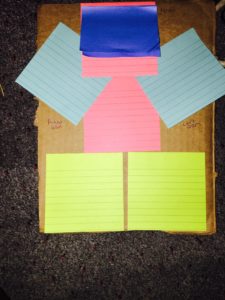
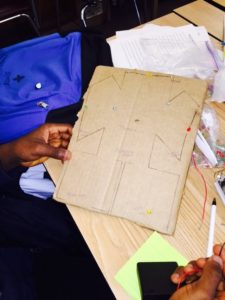
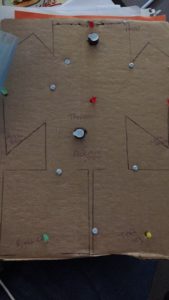
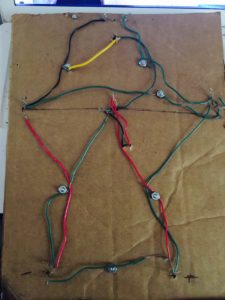
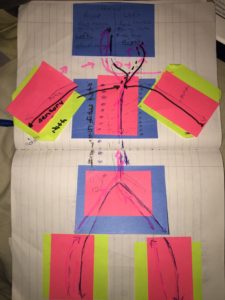
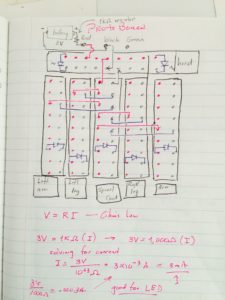
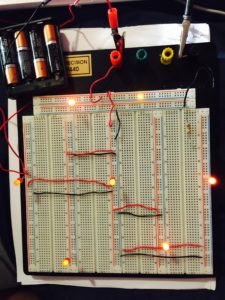
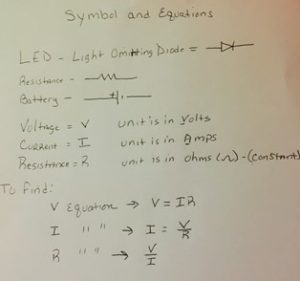
Anatomy & physiology (Adopted form Georgia state standards and Co-Requisites) SCSh8. Science Characteristics of Science high school Standard #8 SAP1. Students will analyze anatomical structures in relationship to their physiological functions. Standard 6: Integration and Coordination in the Human Body: The Nervous System (Adopted form Indiana state standards 2010) AP 6.1 Distinguish the structures of the various types of neurons. Diagram the structure of a motor neuron and explain the function of each of its parts. Physical Science: The Core Curriculum of the School District of Philadelphia is aligned to the Pennsylvania Academic Standards 3.4.10.A: Explain concepts about the structure and properties of matter. 3.4.10.B: Analyze energy sources and transfers of heat. 3.4.12.A: Apply concepts about the structure and properties of matter. 3.4.12.B: Apply and analyze energy sources and conversions and their relationship to heat and temperature.